- Gold prices double, wedding traditions under strain
- Middle-class buyers retreat as costs soar
- Global rally, weak dollar fuel surge
- Bangladesh market plagued by smuggling, shortages
The gold earrings Farzana Khalid purchased for her sister-in-law's wedding were intended as a meaningful treasure. But as the private-sector employee in Dhaka settled the bill, the Tk 50,000 gift plus the soaring making charges felt more like a financial burnout than a cherished ritual.
"Gold prices have surged dramatically," Farzana Khalid says, reflecting that a chain with a small locket now costs nearly twice as much as it did just two years ago.
The budget that once covered a substantial ornament now barely stretches to a token.
"At my own wedding 13 years ago, relatives gifted me small pieces of gold," she recalls. "Today, such gestures have become increasingly rare as many families struggle to keep up with the costs."
In Bangladesh, where the precious metal is deeply embedded in the social fabric as both a primary form of wealth and an indispensable wedding gift, the price of one bhori has hit an unprecedented Tk 2.16 lakh -- nearly double the cost of 26 months ago.
According to the Bangladesh Jeweller's Association (Bajus), the local market is convulsing, with customer turnout plummeting by as much as 50 percent.
The crisis is most acute among Bangladesh's middle class, the very demographic that historically fuelled the market.
Sheikh Mohammad Musa, owner of Shahadat Jewellers in Barishal, has seen his daily sales drop by nearly 60 percent.
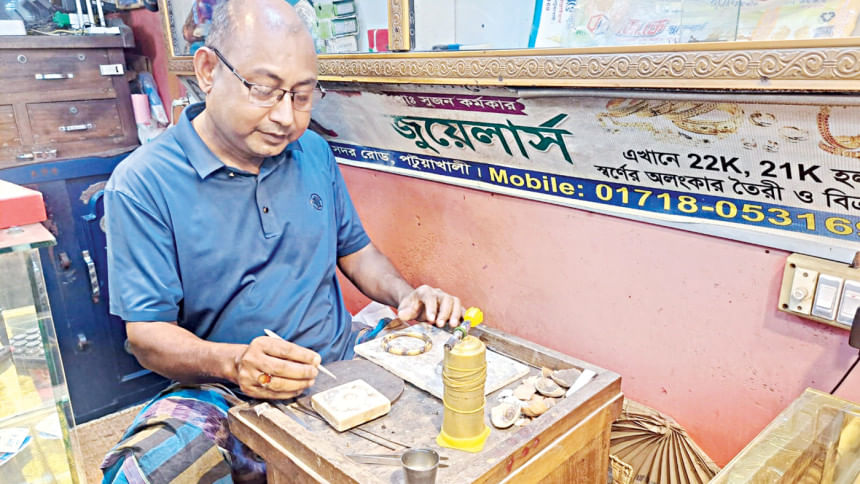
"Even a year ago, people would gift gold ornaments during weddings or festivals," he says. "But as prices have surged, that gifting trend has sharply declined."
In Khulna, one trader estimates that about 90 percent of buyers have disappeared. Many recent purchases are only made under duress.
"Many weddings took place during Durga Puja, but very few people actually bought gold for the ceremonies," he explains. "Those who had old gold at home reused it. Others, just to maintain appearances, bought a small ring or a thin chain."
The pain extends down the income ladder. Poorer customers, those who used to buy small pieces worth Tk 2,000-Tk 5,000, have "stopped buying altogether," says Masudur Rahman, vice-president and spokesperson for Bajus.
Sukanta Das, a banker from Sreemangal who is making savings for his 2026 wedding, must slash other expenses just to meet his marital obligations.
"In our social context, a wedding without gold is often viewed negatively," says Das, expressing the pressure to conform.
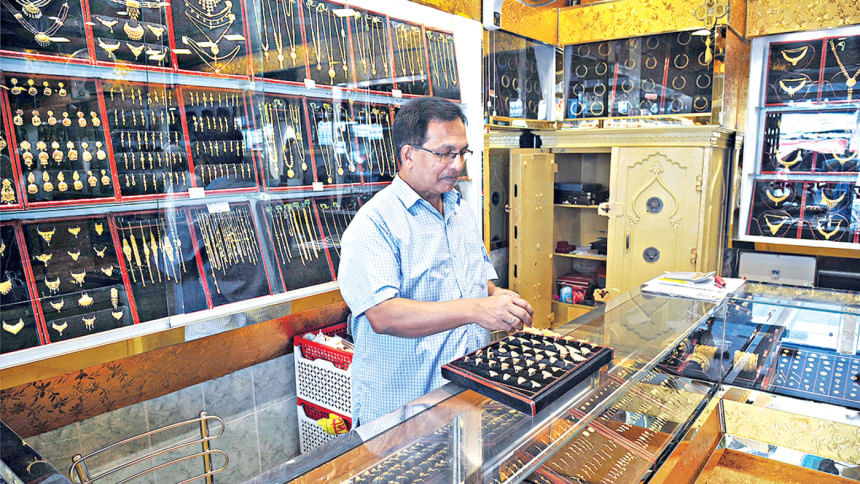
The market response has been a shift from buying new pieces to exchanging or selling old ones.
Homemaker Kabita Ghosh in Barishal confirms the trend, noting that she and her family used to gift small gold ornaments during Durga Puja, but in recent years, "hardly anyone gives such gifts anymore."
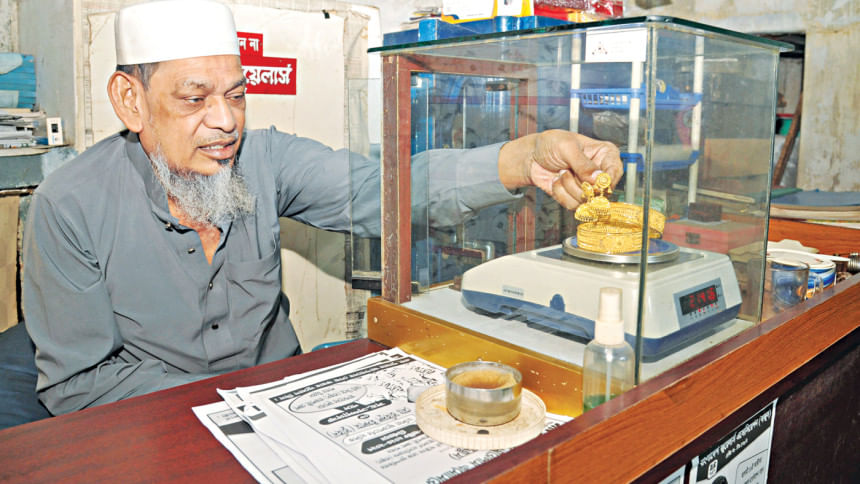
GLOBAL ANXIETY AND THE FRAYING DOLLAR
Local price spikes are tethered to a relentless global rally that has sent the international price per ounce above $4,000.
The surge, an estimated 54 percent rise this year, is attributed by a Reuters report to heightened global anxieties ranging from geopolitical tensions and inflationary risks to sluggish European growth and uncertainty surrounding US monetary policy.
Analysts at Société Générale have already suggested that, on the back of surging institutional flows, reaching $5,000 per troy ounce is "increasingly inevitable."
This surge is being fuelled by several distinct, interwoven forces. One of the most significant has been the long-held inverse relationship between gold and the dollar. Gold's best start since the 1970s comes as the dollar is on track for its worst year since 2017.
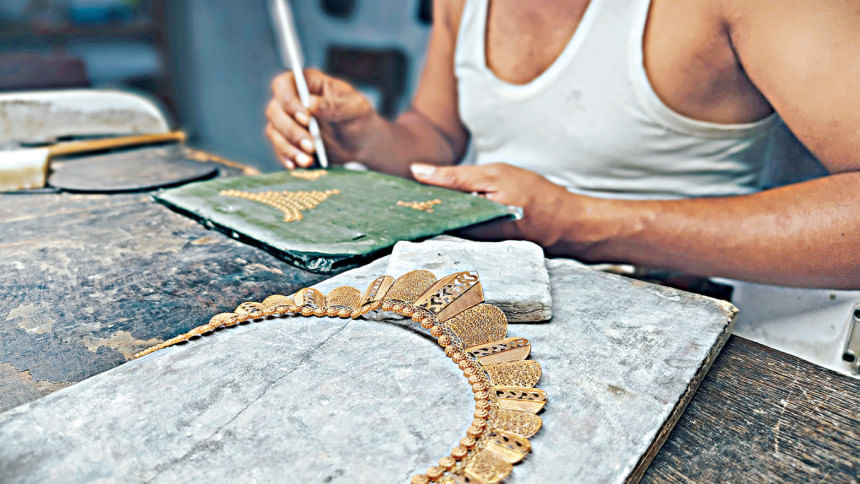
Another big engine powering the rally since 2022 has been record purchases by central banks, mainly in developing countries, who want to diversify their reserve assets away from the US dollar. These annual acquisitions have surpassed 1,000 tonnes since 2022.
According to World Gold Council data, global central banks, excluding the Federal Reserve, held 29,998.4 tonnes at the end of June. That implies, at current prices, the value of official bullion reserves outside the US would be around $3.93 trillion, a fraction higher than the end-of-July number for total foreign holdings of Treasury securities, which stood at $3.92 trillion.
Globally, gold has, in value terms, risen from just 10 percent of central bank reserves a decade ago to around 24 percent at the end of June. For private investors, this structural shift, coupled with geopolitical fears, has triggered a speculative wave. A record $26 billion poured into gold-backed exchange-traded funds during the third quarter.
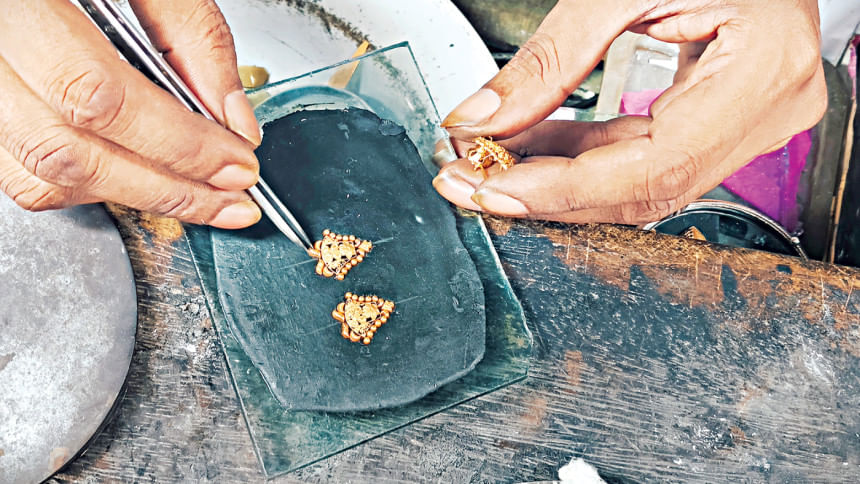
Bangladesh holds 14.28 tonnes of gold, compared with Pakistan's 64.75 tonnes and India's 879.98 tonnes, according to data from the World Gold Council.
For Bangladesh, the global dynamics are compounded by chronic domestic market imperfections.
While the country's annual domestic demand is estimated at 40 tonnes, industry insiders allege that around 80 percent is met through smuggling, a process that drains substantial revenue from the government and keeps local prices at a sharp premium to international rates.
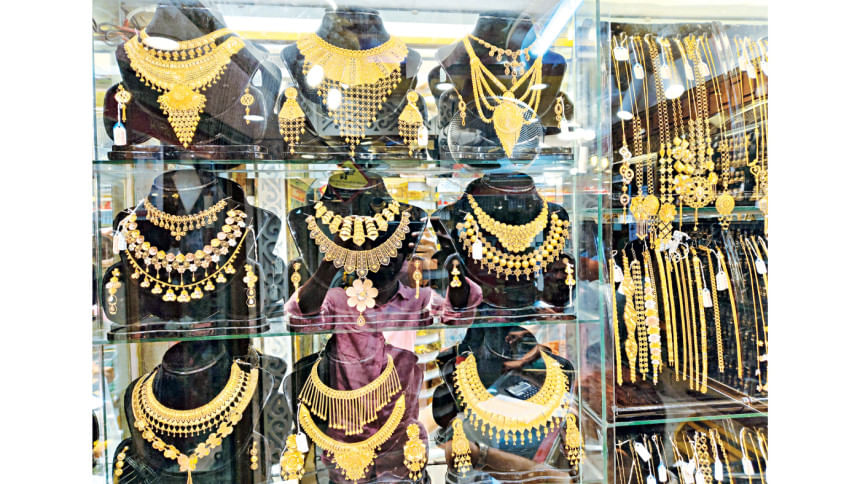
According to central bank data, 21 authorised dealers imported less than 1 tonne of gold over the past five years.
Due to insufficient legal gold imports to meet domestic demand, traders say, gold brought in under baggage rules has become a major source of supply.
Moreover, following the Covid-19 pandemic, the sharp depreciation of the local currency taka against the US dollar has also contributed to the relentless rise in local gold prices.
An analysis by Bajus clearly maps the dramatic rise.
The real acceleration began recently: gold crossed Tk 50,000 per bhori for the first time in January 2018; it hit Tk 100,000 just five years later in July 2023, reached Tk 150,000 in February this year, and has now surged past Tk 200,000.
Even with prices at this level, fewer people are selling their existing gold. Many track global rates on mobile apps and are betting on continued appreciation.
"They assume if they sell today, they might get Tk 10 lakh, but if they wait a month, they might get Tk 12 lakh," says Bajus vice-president Rahman, explaining that only those absolutely forced by circumstances are selling or exchanging the metal.
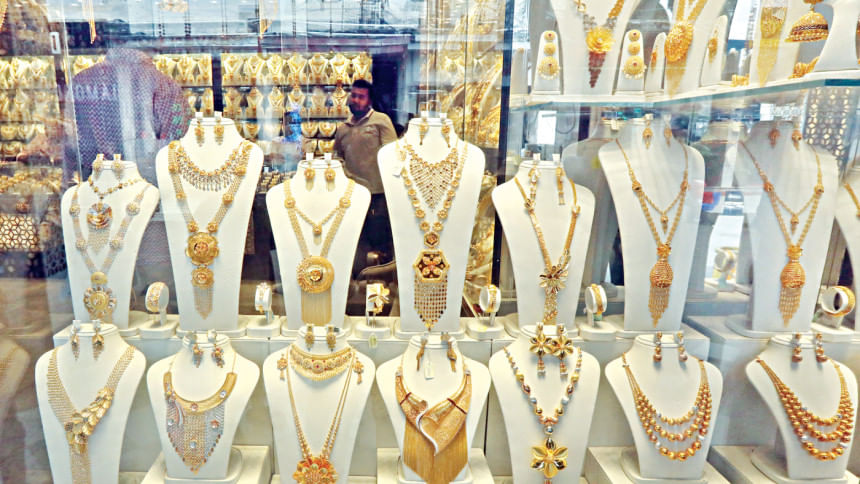
Bajus argues that stability and transparency can only be achieved by formalising the supply chain.
"Unlike other countries where central banks import gold, Bangladesh relies on recycled gold and baggage inflows," Rahman says, suggesting that allowing the Bangladesh Bank to import directly could reduce volatility, improve transparency, and bring local prices closer in line with global benchmarks.
Atef Hasan, chief financial officer of Gold Kinen, a local startup that allows users to buy, sell, and store gold in personal vaults, says the current surge reflects these broader global market shifts.
"History once again reminds us that during economic uncertainty, gold remains a sustainable and dependable store of value," he says.
In Bangladesh, prices have risen by nearly 56 percent in 2025 alone, prompting a positive change in perception.
Hasan says his company has observed a moderately increased interest among their customer base in purchasing gold bars and coins, especially their newly launched 0.5-gram gold bar.
He believes gold is "no longer considered merely for its ornamental value but as a credible and strategic savings and investment tool."
Some buyers purchase jewellery, anticipating further increases. But for now, the surging price of the yellow metal is doing more than re-rating central bank reserves; it is rewriting the culture of gifting for many families in Dhaka and beyond.
[The Daily Star's Khulna correspondent Dipankar Roy and Barishal correspondent Sushanta Ghosh contributed to this report.]




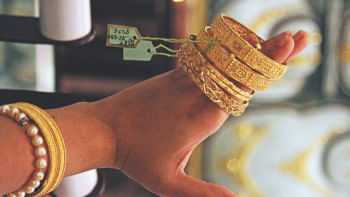


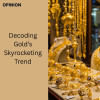
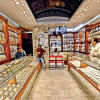

Comments